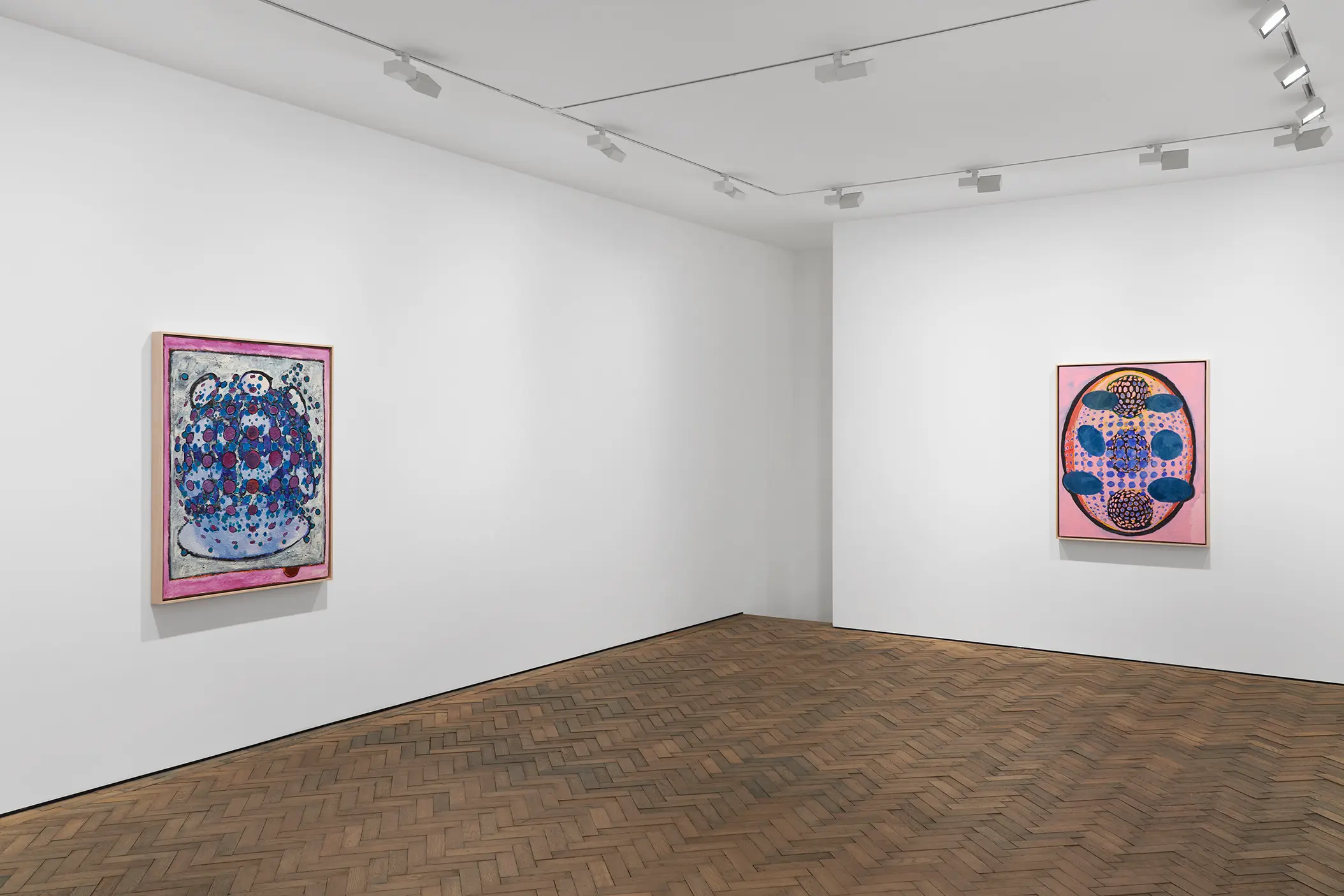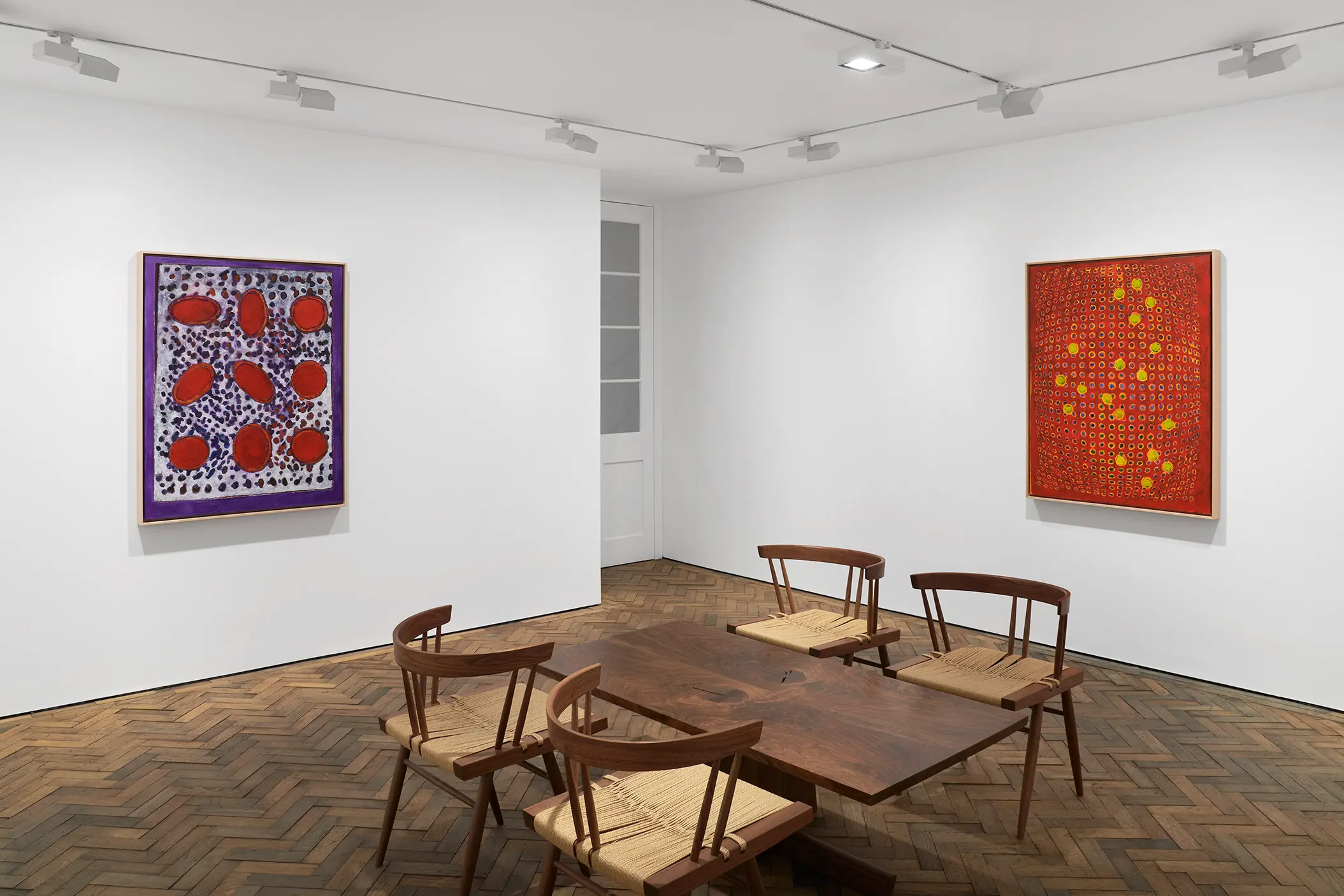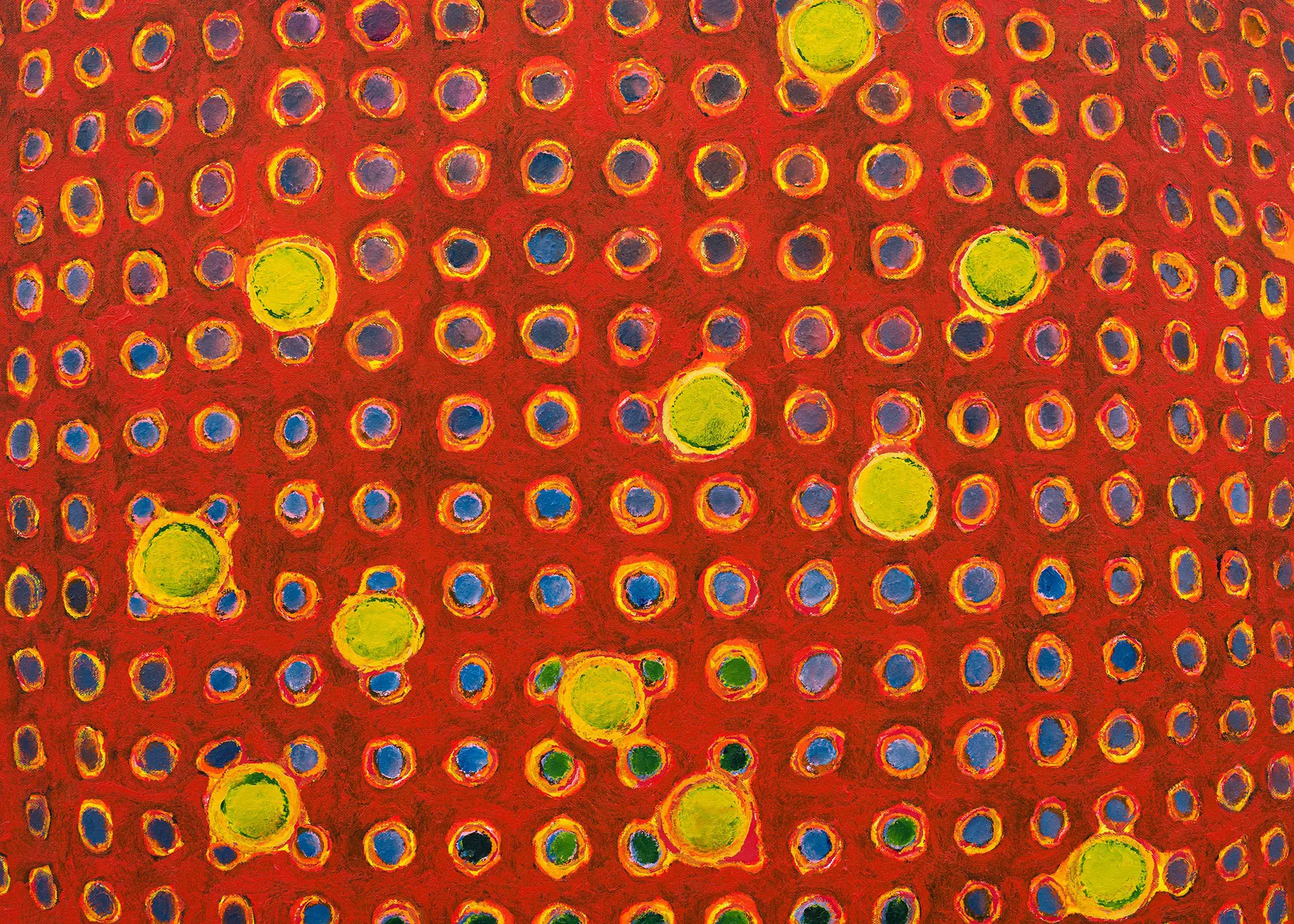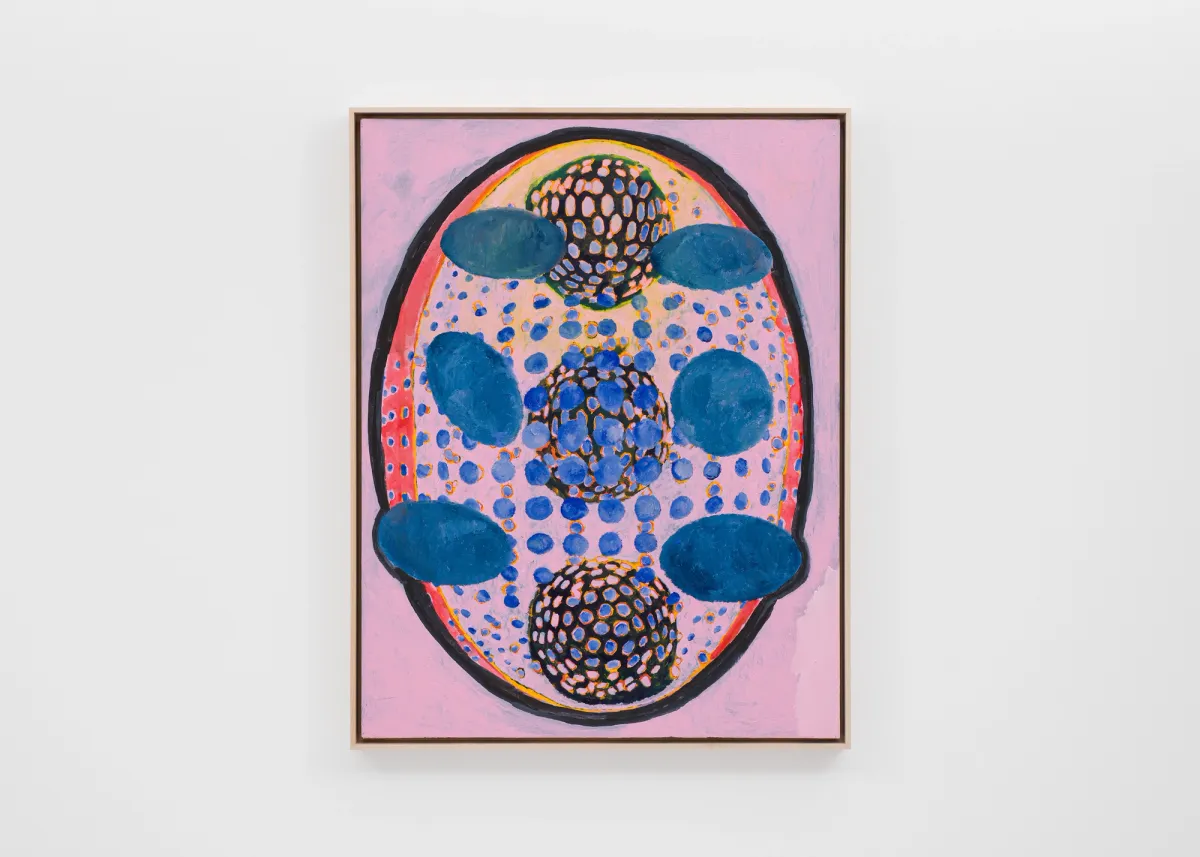We use cookies and other technologies to personalize your experience and collect analytics.
Signs, Games, Messages
Terry Winters
Terry Winters
Signs, Games, Messages
10 October – 17 December 2022
Modern Art is pleased to announce an exhibition of new work by Terry Winters. This is his first solo exhibition with the gallery. Across four decades of his work, Terry Winters has been examining, in various iterations, the relationships between modernist abstraction, information systems, and the architecture of the natural world.
While predominantly a painter, Winters is also known for his drawing and printmaking; each of these different media further his overall project – where mark making is seen as a pictorial process. And where each medium is used to reveal new subjects and possible meanings. As Winters has said: “I’m trying to engineer the paintings to the point where there is a likeness, a sense of life – that the abstract images are somehow real”. After completing his studies at Pratt Institute in the early 1970s where he was immersed in the discourse of Post-Minimalism, Winters spent a decade, on his own, experimenting with painting both as material and as metaphor. Since his first one-person exhibition in 1982, he has exhibited widely in the United States, Europe and Japan.

Modern Art’s exhibition of Winters’ work includes nine new paintings, each measuring 44 x 34 inches, and each made with oil, wax, and resin on linen. The strict parameters of this group of paintings – both in its dimensions and in its materials – in fact has the effect of drawing out difference and singularity. Each painting depicts its own scale-free network, both cosmic and molecular. The disorienting scalar associations of Winters’ work has persisted since its beginning, testifying to his enduring interest in the imaging of patterns and systems that undergird the natural world.

This new body of work describes a dynamic landscape of shifting dimensions and locations. A range of spatial demarcations are described in each title: Field, Centre, Cluster, Band, Ring, State, Area, Zone, and Section. While the organisation of forms on the canvas continue – however loosely – to derive from a gridded structure, their configurations invent new spatial perspectives, appearing to bulge, bend and warp. And although the straightforward nature of their titles connote something prosaic, Winters’ paintings are anything but. With their complex colours, experimental forms, and spirited application of paint, Winters’ works contain within themselves sets of possibilities: calculated and spontaneous, restrained and emotional – both technically determined and lyrically improvised.

Winters is fascinated with what he characterizes as ‘the tension established between the abstract vocabulary I’m using and a likeness to the real world.’ Defining painting as a ‘combination of carpentry and catastrophe’, he mentions how taken he is with what he calls ‘the civilised aspects of the craft, the colour charts and brushes, just the tools, equipment and materials.’ For all his meticulous preparation, his modus operandi allows for – welcomes – the unexpected and the uncontrollable: ‘I take one step after the other in the process until something gets triggered.’ He clari- fies how ‘it all feels very socialized, until a critical point is reached and the work moves to a place that is less known and uncivilised. That’s when things get desperate and the painting shifts and builds to some other kind of place. I’m trying to map that territory and in a way it’s being discovered in real time.’

Press release

Modern Art is pleased to announce an exhibition of new work by Terry Winters. This is his first solo exhibition with the gallery.
Across four decades of his work, Terry Winters has been examining, in various iterations, the relationships between modernist abstraction, information systems, and the architecture of the natural world. While predominantly a painter, Winters is also known for his drawing and printmaking; each of these different media further his overall project – where mark making is seen as a pictorial process. And where each medium is used to reveal new subjects and possible meanings. As Winters has said: “I’m trying to engineer the paintings to the point where there is a likeness, a sense of life – that the abstract images are somehow real”. After completing his studies at Pratt Institute in the early 1970s where he was immersed in the discourse of Post-Minimalism, Winters spent a decade, on his own, experimenting with painting both as material and as metaphor. Since his first one-person exhibition in 1982, he has exhibited widely in the United States, Europe and Japan.
Modern Art’s exhibition of Winters’ work includes nine new paintings, each measuring 44 x 34 inches, and each made with oil, wax, and resin on linen. The strict parameters of this group of paintings – both in its dimensions and in its materials – in fact has the effect of drawing out difference and singularity. Each painting depicts its own scale-free network, both cosmic and molecular. The disorienting scalar associations of Winters’ work has persisted since its beginning, testifying to his enduring interest in the imaging of patterns and systems that undergird the natural world. This new body of work describes a dynamic landscape of shifting dimensions and locations. A range of spatial demarcations are described in each title: Field, Centre, Cluster, Band, Ring, State, Area, Zone, and Section. While the organisation of forms on the canvas continue – however loosely – to derive from a gridded structure, their configurations invent new spatial perspectives, appearing to bulge, bend and warp. And although the straightforward nature of their titles connote something prosaic, Winters’ paintings are anything but. With their complex colours, experimental forms, and spirited application of paint, Winters’ works contain within themselves sets of possibilities: calculated and spontaneous, restrained and emotional – both technically determined and lyrically improvised.
Terry Winters was born in 1949 in Brooklyn, NY. He lives and works in New York City and Columbia County, NY. His work has been the subject of numerous solo exhibitions at museums across the United States and Europe, including the Drawing Center, NY, USA (2018); University Museum of Contemporary Art, University of Massachusetts Amherst, MA, USA (2018); Museum of Fine Arts, Boston, USA (2017); Louisiana Museum of Modern Art, Humlebaek, Denmark (2014); Irish Museum of Modern Art, Dublin, Ireland (2009); The Metropolitan Museum of Art, NY, USA (2001); Kunsthalle Basel, Switzerland (2000); Whitechapel Gallery, London (1999); Victoria and Albert Museum, London (1998); Whitney Museum of American Art, NY, USA (1992); Museum of Contemporary Art, Los Angeles, CA, USA (1991); Walker Art Center, Minneapolis, MN, USA (1987) Tate Gallery London (1986).